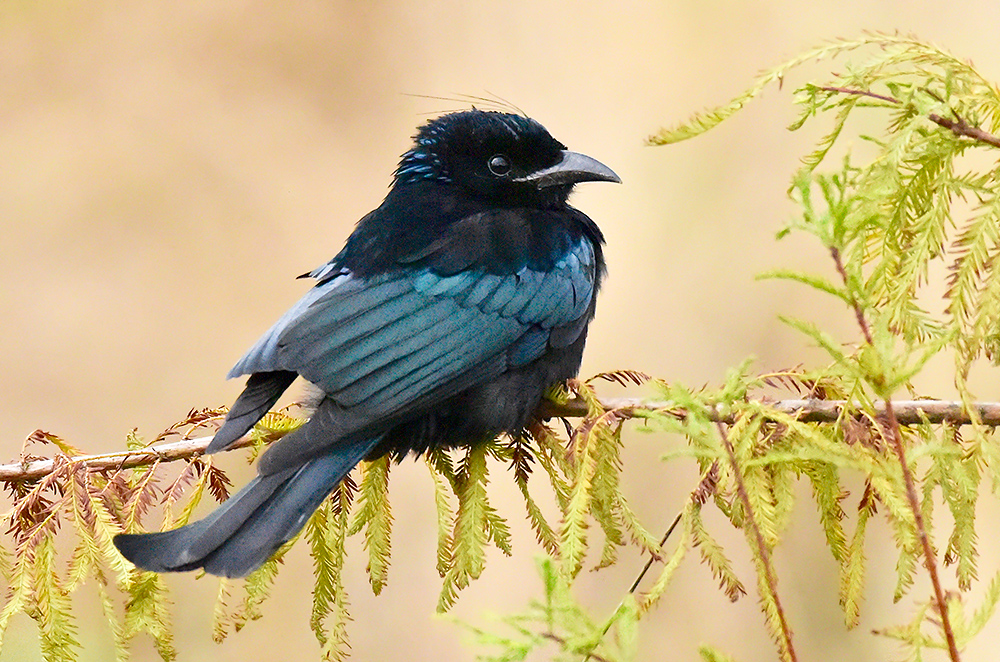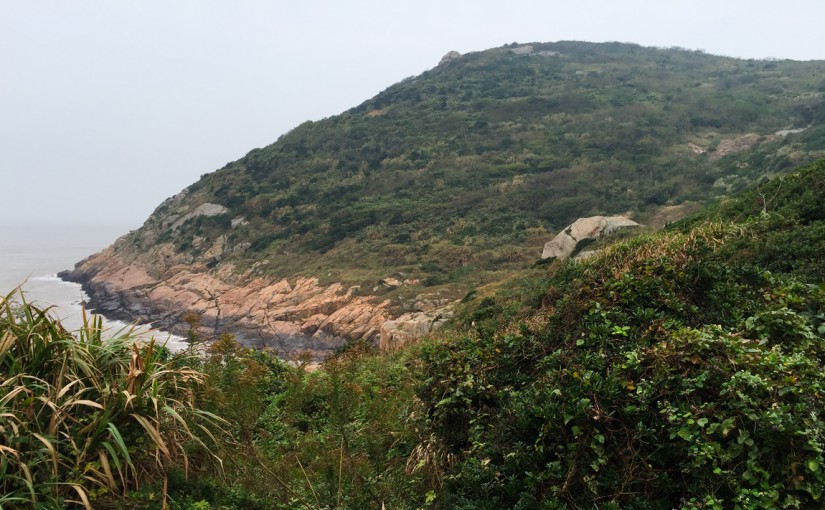by Craig Brelsford
Founder, shanghaibirding.com
Recently, there seems to have been an influx of Japanese migrants in Shanghai. The Dream Team noted 37 Japanese Thrush on 7 Nov., and Japanese Robin and Yellow Bunting have been reported in the Shanghai area. Elaine and I decided to try to determine whether the islands farther out than Lesser Yangshan are part of the Japan-China migration route. The thesis that Elaine and I were trying to prove is as follows: “Inasmuch as Sijiao Island is larger, more thickly vegetated, better protected, and farther out to sea than Lesser Yangshan, the selection there of migratory birds, especially those from Japan, is richer than at Lesser Yangshan.” Thesis 2: “As Sijiao Island is the northernmost of a line of islands oriented roughly on a N-S axis, many birds having crossed the East China Sea from Kyushu will use that line of islands as stepping stones to mainland Asia at Ningbo, Zhejiang.” After visiting Sijiao Island 11-13 Nov., Elaine and I have found little to support those theses. Sijiao Island is densely populated, with only the steep hillsides and mountaintops unused by humans. We found only one gully that compares to Garbage Dump Gully and Temple Mount on Lesser Yangshan.
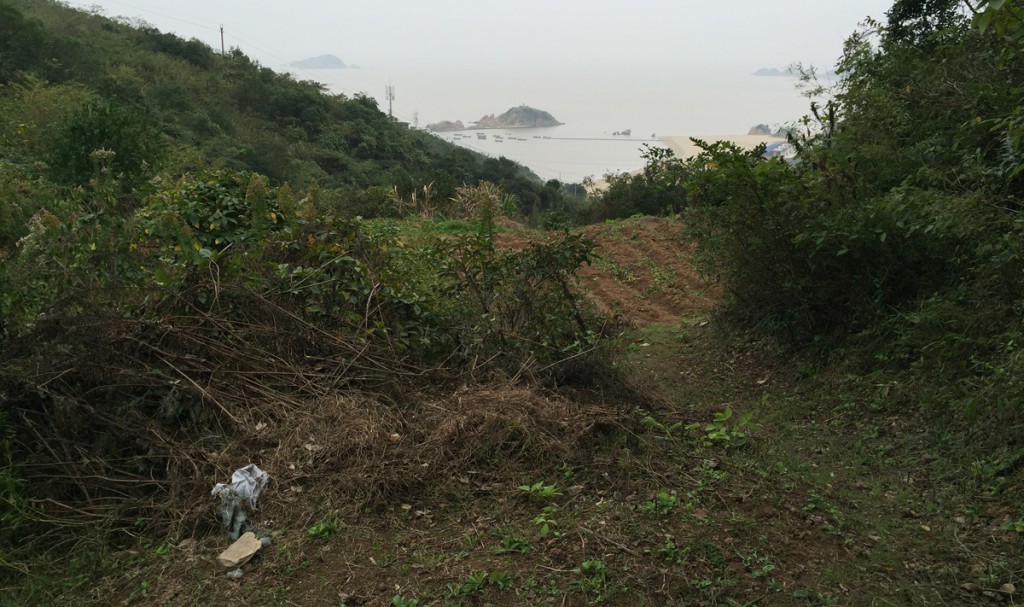
This post contains a description of our three days on Sijiao plus visits to Lesser Yangshan and Nanhui at the beginning and end of the trip.
On Wed. 11 Nov., after the alarm woke us at 04:00, Elaine and I drove our rented Skoda from our apartment near Zhongshan Park in Puxi, Shanghai to Garbage Dump Gully on Lesser Yangshan. The gully was busy. Yellow-bellied Tit is not often seen on Lesser Yangshan, and we saw a female Japanese Thrush. Among the 10 Red-flanked Bluetail were 2 adult males. Chinese Sparrowhawk was distinguishable by the lack of bands on the wing linings.
We had to wait for the 11:30 ferry to Sijiao Island. During the crossing, which Elaine and I spent on the deck, we saw not a single bird. At Sijiao we drove off the ferry and started looking for habitat. I was looking for flat, wet areas near the mouth of a gully, but I soon saw that every bit of that sort of land has been put to use by the local people. Next, we searched for gullies higher up the steep, thickly vegetated mountainsides. We found one gully, now being used as a garbage dump, with gardens higher up. This gully produced about as good a mix of species as I have come to expect at Temple Mount and Garbage Dump Gully. We found Yellow-breasted Bunting, 2 Chestnut Bunting, and 2 Tristram’s Bunting, and we had long, close views of Brown-flanked Bush Warbler. A pair of Black Kite soared overhead, and a Rook passed over. Nearby, on the road just below the overlook at Dabeishan Scenic Area, we found Taiga Flycatcher. Daurian Redstart were numerous, and the sound of Light-vented Bulbul was constantly descending on us from the steep hillsides above.
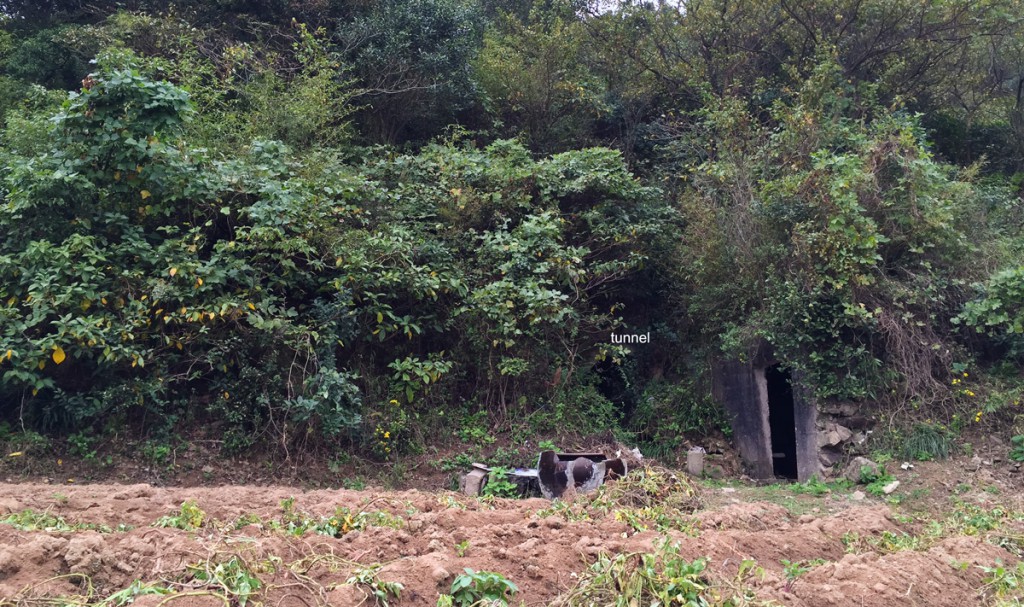
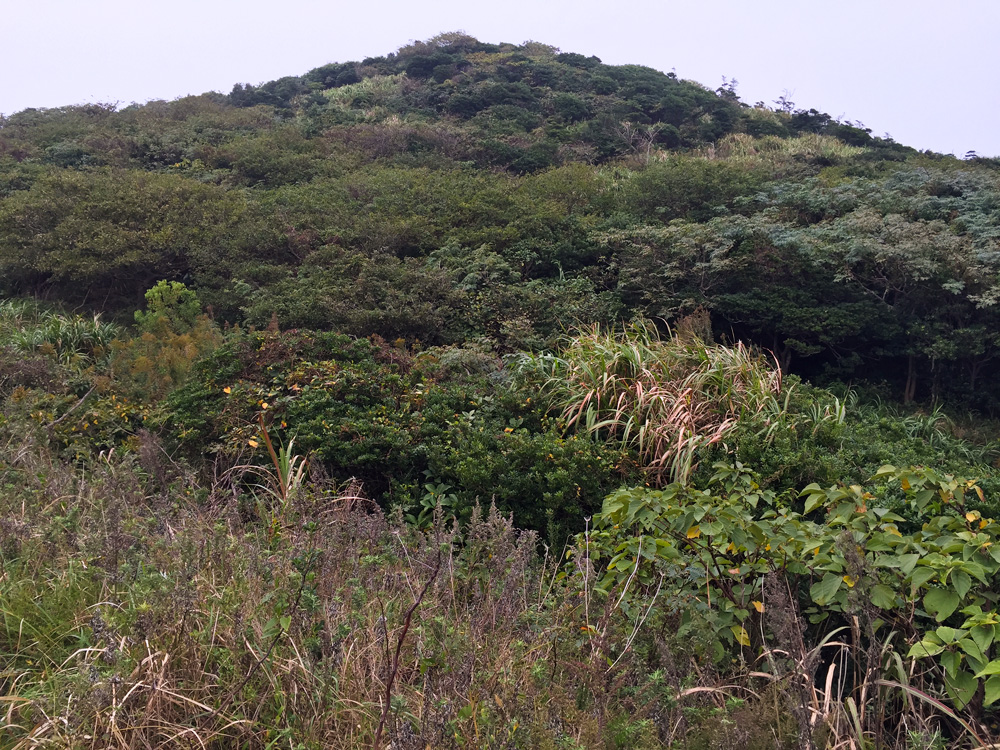
Thurs. 12 Nov.
Sijiao Island
Elaine and I noted 40 species on Sijiao Island. We marveled at the original scrub forest on the eastern end of the island, and I returned to the unnamed garbage dump. Although we found no evidence of major migrations from Japan, the birding was nonetheless solid.
My day started at the unnamed garbage dump near Dabeishan. In two and a half hours, I noted 27 species. I had a first-of-season Rustic Bunting and heard Brown-flanked Bush Warbler singing weakly. The pair of Black Kite patrolled the sky above, and a Peregine Falcon zipped in, trying to catch one of the dozens of Light-vented Bulbul. I got a good look at Dusky Thrush, and I saw 5 Hawfinch.
I explored the hillsides around the gully, finding more good habitat. In the gully I walked into an old military tunnel and found dozens of centipedes as long as my hand.
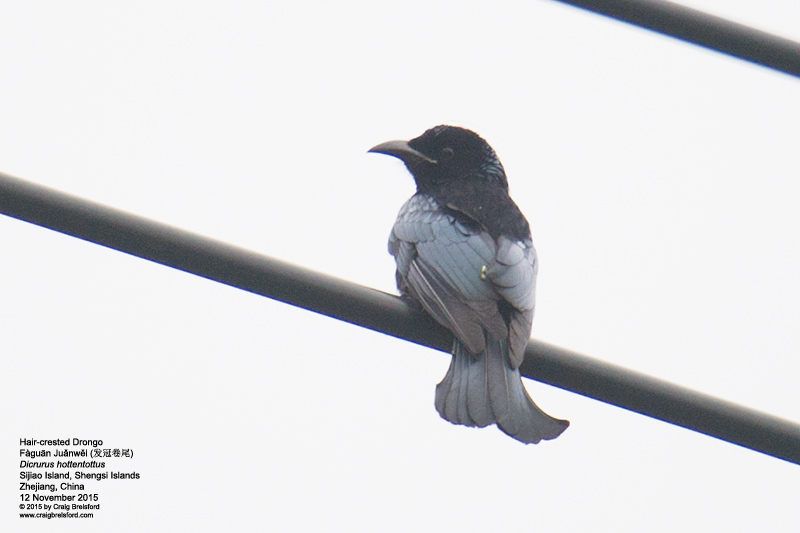
I returned to our hotel to pick up Elaine. We drove toward Liujingtan Scenic Area on the eastern edge of the island. Along the way, we noted Hair-crested Drongo and a singing male Meadow Bunting. At Liujingtan, we declined to pay 100 yuan for the right to drive a mere 700 m beyond the gate. From the parking lot Elaine and I scanned the valley below. I followed a trail heading into the valley and soon found myself in uncut scrub—the primeval “forest” of Sijiao! The scenery was outstanding. Pinkish-brown rocks stand firm against the crashing sea. I moved down to a spot near the water, where the parking lot and civilization above were unseen. The great emptiness of the sea yawned before me. It was an odd sight, but the whistles of the ubiquitous Daurian Redstart pulled me back. Eyebrowed Thrush, Japanese Thrush, and Pale Thrush were taking berries from the many fruiting trees, and from a sturdy branch a Japanese Sparrowhawk was doing its own form of bird-watching.
Would I recommend a visit to Sijiao Island? If you are willing to spend about 600 yuan to get your car to Sijiao and back to Lesser Yangshan, and if you would like to spend an hour or two in line and another 80 minutes one way on the ferry to get here, then, yes, you should go–but if Elaine’s and my two days here are any indication, then you will find many of the same birds that can be found on Lesser Yangshan and at Nanhui. You will find better scenery, especially around Liujingtan, a larger area to bird than is the case on Lesser Yangshan, and more peace and quiet. The Wu dialect of the people here, so similar to Shanghaihua, reminds us that this island is close to Shanghai, but because it’s 40 km off the coast, requires hours to reach, and offers rocky coasts with crashing waves, Sijiao feels like a different world. It may not be worth a special trip, but birders here on a family visit will very much find it worth their while to bird the areas I have researched.
Fri. 13 Nov.
Lesser Yangshan & Nanhui
At Cape Nanhui, Elaine and I found a late Japanese Paradise Flycatcher and 7 Black-faced Spoonbill. Buff-bellied Pipit were numerous. We noted 2 Peregrine Falcon on Lesser Yangshan.
The day began on Sijiao Island. We awoke at our small hotel and drove through the rain to the ferry terminal. The crossing was uneventful. Once on Lesser Yangshan, we drove straight to the parking area at Temple Mount and began birding. At Garbage Dump Gully we noted a female Mugimaki Flycatcher—Ficedula mugimaki always being the last of its genus to depart the Shanghai area. 3 of the 6 Red-flanked Bluetail were adult males. Impressive flocks of Brambling contained a total of 175 individuals. One of the Bull-headed Shrike was an adult.
At Nanhui we squinted into the backlit mudflats and found hundreds of duck, the most numerous by far being Eastern Spot-billed Duck. I managed to pick out several Mallard and a Northern Pintail before the cloud of birds moved even further out. We visited all 8 of the microforests and found Taiga Flycatcher, Goldcrest, and the Japanese Paradise Flycatcher. We birded till dark then drove to Dongtai, Jiangsu.
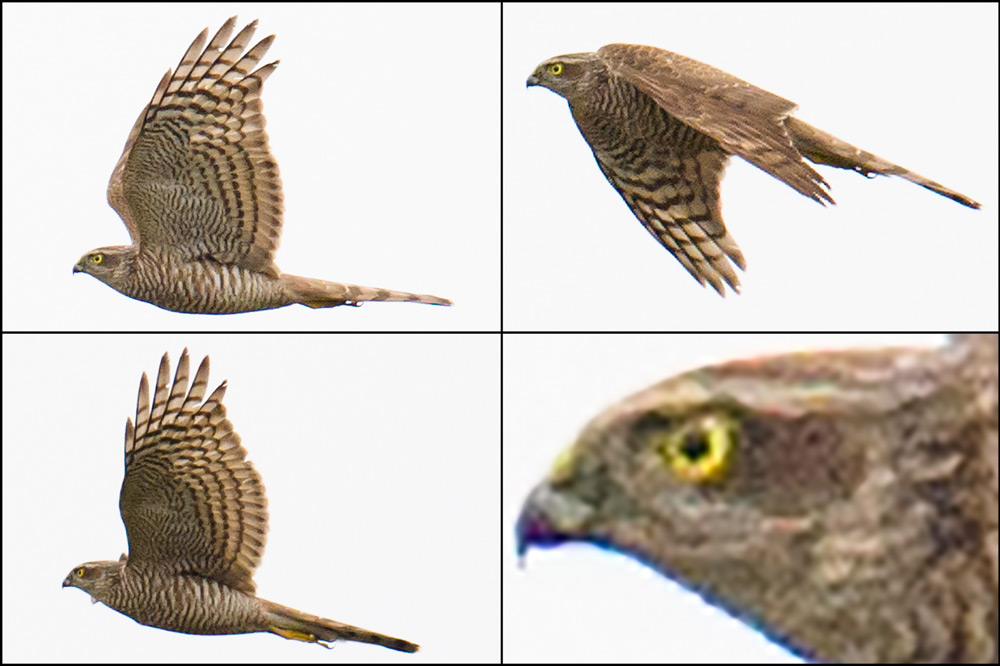
Featured image: Rock, sea, and hills covered with original Sijiao scrub, Liujingtan Scenic Area, Sijiao Island, Zhoushan, Zhejiang, China, 12 Nov. (Craig Brelsford)

